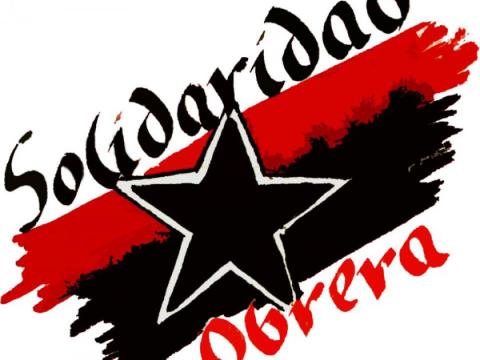An article by a Wobbly who went to Spain about political subcultures and how the IWW should avoid marginalizing themselves within them. We do not necessarily agree that the CGT, with their model of representative unionism, are the best example of accomplishing this, but agree with the overall with the thrust of the piece.

If you’ve ever met me, you probably don’t think I look like a radical. I frequently wear button-up shirts. I own penny loafers, several good suits and a dozen or so neckties. My hair is neat and short and I don’t own any clothing advertising the name of a band. In sum, I am not punk at all. Nonetheless, I identify as a militant. I have been a member of the IWW for almost 15 years. I have been involved in several organizing campaigns, committed civil disobedience and spent long periods of time doing solidarity work in Chiapas, Mexico.
I was reminded of the dissonance of my politics and my appearance recently when my wife and I were in Spain for a sort of second honeymoon. While in Barcelona, we stopped by an anarchist squat and visited with workers from the Confederación General del Trabajo (CGT), Spain’s largest anarcho-syndicalist labor union. At the squat, we were received with suspicion. Punk music was blaring, people were drinking and there were four dogs that seemed to be constantly on the edge of a dramatic fight. It took a few minutes for us to find someone to talk to and even after we did the young woman who decided to show us around had to repeatedly explain to her comrades that we were anarchists from the United States. In truth, it was a somewhat awkward experience. All of the squatters were in their late teens, 20s and, maybe, early 30s and dressed in a similar fashion. A visit with them felt more like a visit to a subcultural bar than a visit with a political movement. I got the sense that if you didn’t look the part you weren’t quite welcome.
Our experience with the CGT was quite different. The CGT has more than 50,000 members and through Spanish labor law, represents significantly more than that. The union’s office in Barcelona was a hive of activity. It takes up two floors of a large office building and includes a library and cafeteria. There were easily 50 people there when we visited.
The union members were more age diverse than the squatters. But more importantly, they were united not by their adherence to common subculture but by their commitment to the union. Their style of dress was diverse and so was their taste in music. What clearly mattered most was people’s commitment to the union, and that commitment was significant. The Barcelona CGT has around 12,000 members. But with that large membership it has only four paid staff, none of whom are elected officers. Everyone else whom we met, including the gracious Àngel Bosqued, the Secretary General of the CGT in Catalonia, was an unpaid volunteer.
The contrast between the squatters and the CGT has had me thinking about my own organizing work. Currently I am involved in an organizing campaign at my workplace. We have been at it for less than six months and have managed to build a solid organizing committee of 20 members. I have more experience organizing than most of the other workers and I am also a bit older. I was not one of the initiators of the campaign. One of the things that I have noticed about it is that, initially, those who helped start the campaign were most successful at bringing in people like them—in their case young, hip, and formerly involved with Occupy.
We can’t build the union we want to build if we only stick to one demographic. It has been a major task of mine to get people involved in the campaign to think about recruiting people outside of their social circles. We have started to have some success. In the last few months we have added a number of workers to the committee who don’t fit the profile of the initiators. Some of them even profess conservative politics. We have managed to get them involved not by assuming that we all share the same cultural references but that instead we share common grievances and that those grievances have a common solution: a democratic and powerful union.
Ultimately, I think that this is the key to building the IWW into large radical union like the CGT. Rather than assuming that Wobblies share a common culture, we should think of every worker as a potential Wobbly. The task of each Wob is to teach our fellow workers that we all have common problems and that those problems have a common solution.
Originally appeared in the Industrial Worker (July/August 2013)






Comments